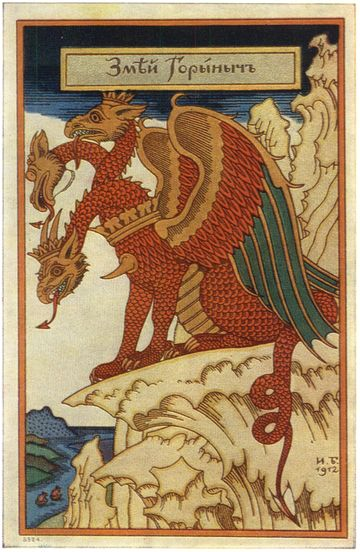A Dragon in old England?
Posted by: Nick Redfern on May 30th, 2012

Over at Beachcombing’s Bizarre History Blog, there’s a new post titled Seventeenth-century English Dragons that cites a 1669 document which refers to a strange creature seen in the county of Essex. In part, the old pamphlet says of the beast that it was…
“…8 or 9 foot long, the smallest part of him about the bigness of a Man’s leg, on the middle as big as a Mans Thigh, his eyes were very large and piercing, about the bigness of a Sheep’s eye, in his mouth he had two rows of Teeth which appeared to their sight very white and sharp, and on his back he had two wings indifferent large but not proportionable to the rest of his body, they judging them not to be above two hand fulls long, and when spreaded, not to extend from the top of one wing to the utmost end of the other above two foot at the most, and therefore altogether too weak to carry such an unwieldly body.”
A real-life dragon? A Griffin? A prank? Something else? You know what to do: click the link!
About Nick Redfern
Punk music fan, Tennents Super and Carlsberg Special Brew beer fan, horror film fan, chocolate fan, like to wear black clothes, like to stay up late. Work as a writer.










Quick FYI, that image has abolutely nothing to do with old English dragons. The text is in Russian and the date (quite clearly) reads 1912. The dragon is Zmey Gorinich.
Okay, the second title in the article you linked to (the hundred word title) sounds like a croc or gator. But this 8-9 foot, 2 rows of teeth with big eyes has me stumped. A lot of snakes can reach great lengths but they don’t tend to have ‘large’ eyes and sheep have big eyes. (just helped Seniors finish dissecting some this week)
I’m overlooking the ‘wings’ as they could have been parasites or growths or just the wild imaginations of the people describing the animal. Best I can come up with is a now extinct type of reptile or salamander, but since I didn’t see any mention of water or legs it really is just a shot in the dark.
Dragons depicted in Asia, Europe, South America…..actual Dragons, Dino fossils, actual Cryptids, actual left over Dinos? So fascinating!
Zmey is the old medieval Russian word for dragon. And Gorynich is a patronimic , meaning “son of Goryn”. Goryn is either a very old name no longer in use, or else a name the writer of the fairy tale simply made up. In either case, it was the literary style of the period to give names to monsters in fairy tales or myths.
I’m sorry I was so slow getting in on this post. In college, I did a paper on dragons in Europe–I got overwhelmed by the number of accounts across Britain alone. There’s an awful lot of reports covering everything from critters with wings, to critters that spat a corrosive poison and so on. The common denominator in a lot of sightings was akin to the description above–about being the thickness of a person’s thigh or leg and long–many times with limbs or wings, discounting snakes–unless it was embellished, but again, there were lots of sightings/accounts, so I’m critical of thinking they were all just exaggerated accounts of encounters with snakes.
That is another critter which has always intrigued me, if for no other reason than the fact that dragons show up in almost every culture (and I’m not buying into the theory that people just came across dinosaur skeletons and ASSigned them to dragons).